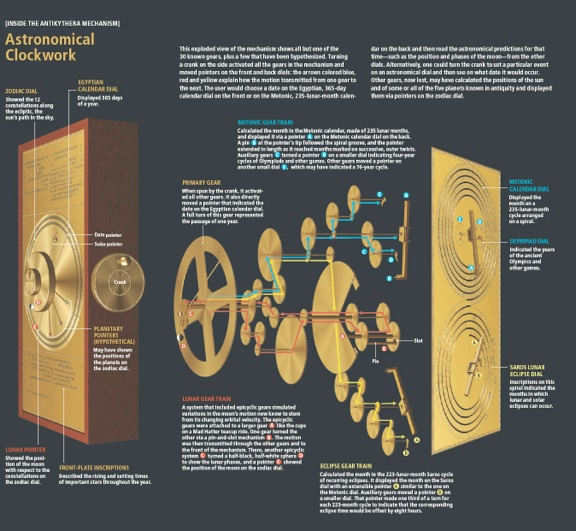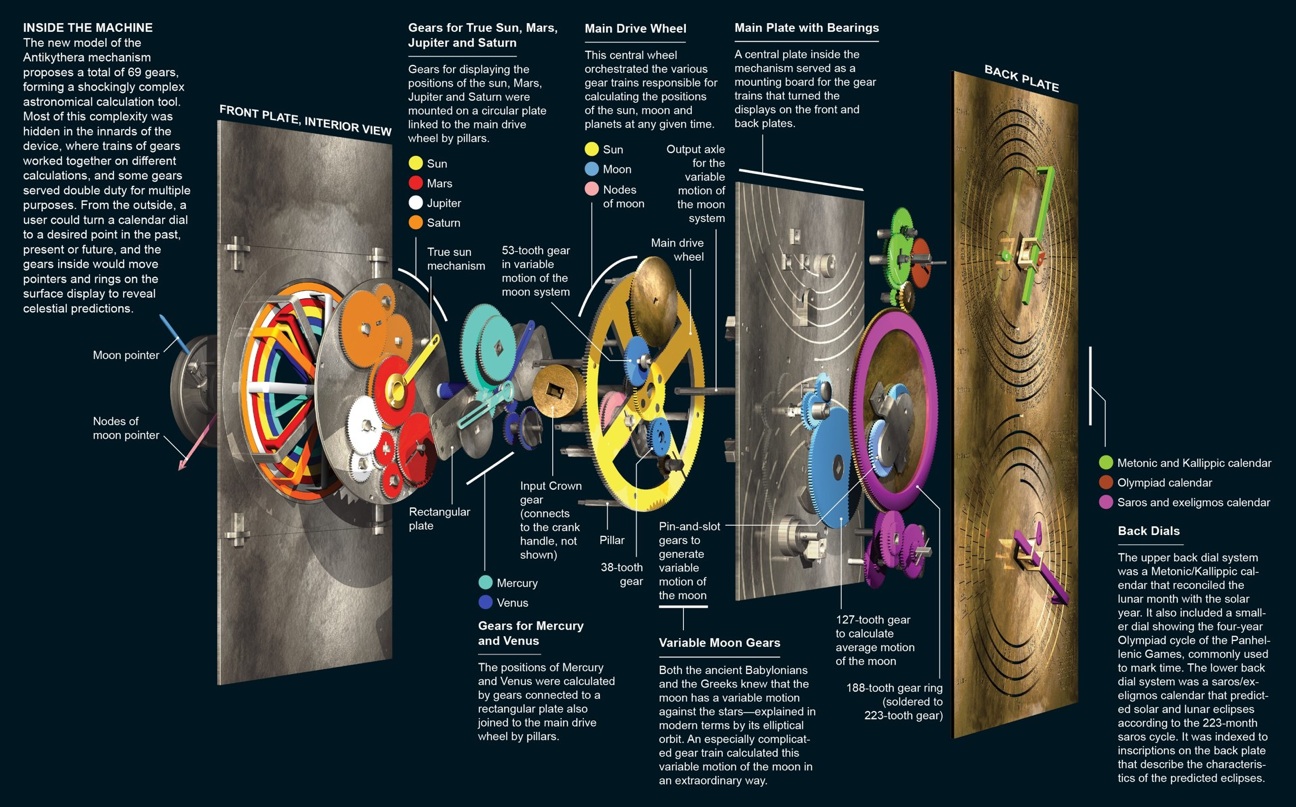Antikythera Mechanism

INTRODUCTION
Archaeologically speaking it is no understatement that the greatest ancient wreck ever discovered was off the coast of the tiny island of Antikythera, 60miles North-West of Crete, in 1902. However when the divers, who were searching for sponges, retrieved a bronze arm from the considerable depth of 45m, they had no idea how much the modern view of Greek civilisation was going to change. Nor did they know how it would take over 100 years for scientists to unravel the significance of what was down there. Please note that any diagram that you see in any place is a significant guess of how the mechanism MAY have worked !
“It’s a work of genius that continues to this day to surprise and shock us” Dr Tony Freeth.
The very first underwater archaeological dig in history revealed yet another marvel: the sheer size of the ship that met it’s end on those rocks on that fateful day somewhere around 100BC. Whoever lost those goods would have been extremely upset.
At present I’m not going to explain any more here because frankly the Wikipedia page does an very good job: Wiki:Antikythera Mechanism
The various dives to the site are chronicled here: Jennifer Ouellette, ARS Technica

Magazine Article
A few years ago I wrote an article for a magazine WackyCornerSpecial_AntikytheraMechanism.pdf
From information supplied by Maggy Simms, Armchair Archaeology, U3a July 2023
(Published here by kind permission)
Since the 1990’s a great deal of technology has been used to probe the significantly corroded metalwork of the mechanism. In 2012 an international exhibition was held to highlight the recent remarkable discoveries.
Booklet_TheAntikytheraExhibition2012.pdf
Article_SmithsonianMagazine_HowBrianFoleyReinvestigatedTheWreckSite_2015.pdf
Booklet_ContentsPages_Shipwreck&Artefacts.pdf
Booklet_ArchaeologyOfTheShipwreckHullPlanks.pdf
Booklet_ArchaeologyOfThe RecoveredSculpture.pdf
Jacques Cousteau visited the wreck in 1953 and in 1973 shown in this video(1h28): Jacques Cousteau Odyssey Diving For Roman Plunder
Maggy’s original post is here Additional Resources

Expanded View from the book A Portable Cosmos by Alexander Jones

Gearing Relationships (The Freeth & Jones Proposal)
YOU TUBE DETAILED EXPLANATIONS
By accomplished mathematician Dr Tony Freeth
A superb breakdown of the discovery of the find and workings of the mechanism itself (58m): Antikythera Mechanism Explained by Dr Tony Freeth
An Eitner Lecture to Stanford University USA in 2016. Tony Freet humorously explains the “What, when, who, when, why..” and goes on to fathom the cycles that the mechanism predicts (1h48): Antikythera Mechanism: A Shocking Discovery from Ancient Greece.
Rear Side View (UCL Antikythera Research Team)

Additional Resources
Disclaimer
Whilst some care has been taken to check externally linked websites no responsibility is offered nor implied for the suitability, legality or reliability of content therein.

